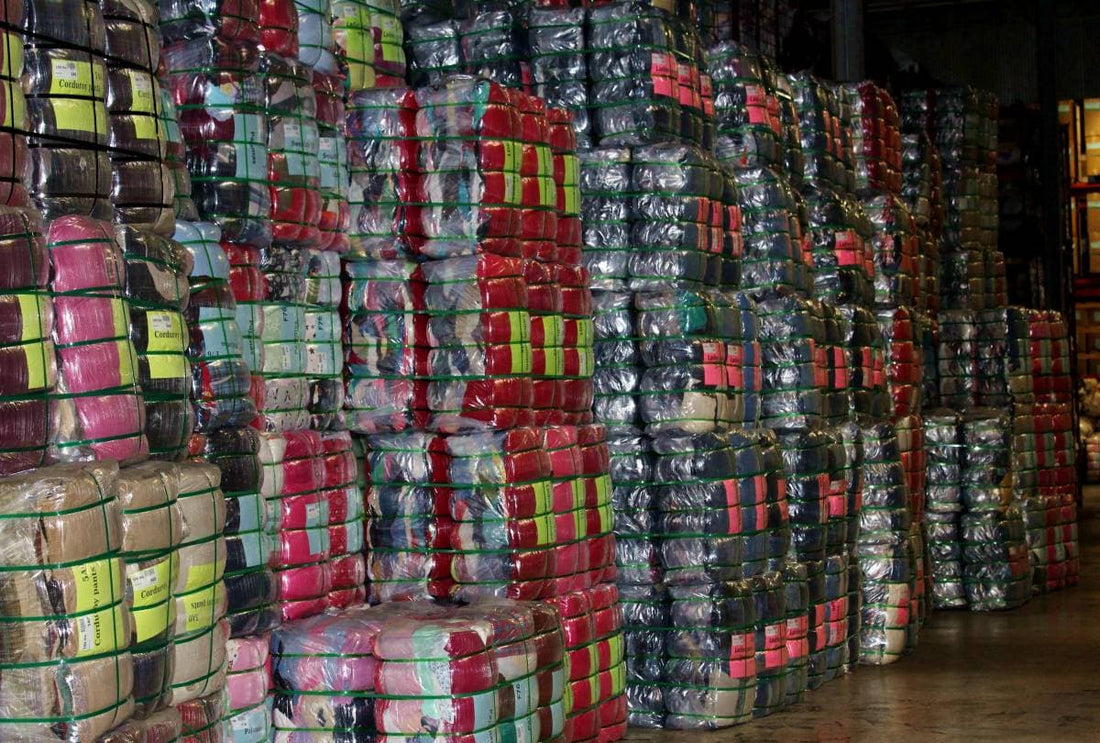As we step further into 2024, the conversation around sustainability in fashion has reached a fever pitch, with "circularity" becoming one of the industry's most buzzworthy concepts. At Anthora Collection, we want to contribute thoughtfully to this debate—not just follow trends. So, what does a true circular fashion system look like? Can take-back programs, which promise to close the loop on waste, really deliver?
The Rise of Circular Fashion Laws
Across the globe, governments are tightening the reins on fashion’s environmental impact. In the European Union, the Extended Producer Responsibility (EPR) scheme will soon require brands to take responsibility for what happens to their products after they're sold. This includes mandatory take-back programs and the recycling of materials. France, already a leader in this area, has banned the destruction of unsold goods and introduced stringent labeling rules to increase transparency¹ ².
While these regulations are a step forward, they also reveal a sobering truth: most take-back programs don’t work as well as they should. For example, H&M’s recycling program, once hailed as a sustainability breakthrough, has faced criticism because much of the returned clothing ends up in African nations like Kenya. There, these "recycled" garments frequently overwhelm local markets, contributing to waste and environmental degradation³.
What Really Happens to Returned Garments?
For many brands, the cost of sorting, cleaning, and restocking returned goods often outweighs the benefits, which leads to a disturbing reality: even new items are often discarded rather than resold. This throws the entire concept of circular fashion into question. If even the best-intentioned take-back programs fail to keep garments out of landfills, what hope is there for used, worn-out clothing?
The issue is not just about intention; it’s about infrastructure. Many regions lack the recycling capabilities to handle textile waste. And as the Kenyan example shows, when old garments are exported to countries with insufficient waste management systems, it creates a ripple effect of environmental harm³.
The Role of Government and Businesses
The sad reality is that the economic margins for recycling garments are slim to none. Few businesses are willing to invest in a broken system. This is where government intervention becomes crucial. Without strong regulatory frameworks and incentives, it is unlikely that the private sector alone will solve the problem. Governments around the world need to provide the necessary infrastructure and enforce regulations that hold brands accountable—not just for producing goods, but for what happens to them when they are no longer wanted¹².
The EU’s upcoming regulations are a good start. They require not only recycling but also proper measurement and reporting of a product’s environmental impact across its lifecycle. Brands will need to justify their sustainability claims with data that can be verified independently¹². This shift is crucial, as it addresses the greenwashing that has plagued take-back programs in the past.
Consumers Have the Power
While brands and governments must take responsibility, we cannot ignore the role of consumers in shaping the future of fashion. The truth is, choosing sustainable options often comes at a higher cost. But this is a cost we all need to accept, as investing in better-quality, longer-lasting garments will reduce waste in the long run.
By selecting brands that commit to ethical production, recycling, and transparency, consumers send a powerful message. Every purchase has an impact, and as more people opt for higher-quality, sustainable pieces, the market will shift to meet that demand. Yes, this might mean paying more upfront, but the environmental savings are worth it. Fast fashion’s hidden costs—both environmental and human—are far greater in the long term.
At Anthora Collection, we’re proud to be part of a growing movement that prioritizes durability and timeless design over disposability. But real change can only happen when consumers, brands, and governments work together. As individuals, we have the power to choose better alternatives, knowing that these decisions contribute to a cleaner, fairer future for everyone.
A Path Forward: Collaboration for Real Change
It’s clear that circularity cannot succeed in isolation. Brands, governments, and consumers must all play their part. For brands, this might mean rethinking the lifecycle of their products from the design phase. For governments, it means investing in infrastructure for recycling and waste management. And for consumers, it means being more mindful of our purchases and what happens to our clothes when we no longer want them.
At Anthora Collection, we are committed to exploring what true sustainability looks like—not just through the lens of circular fashion, but by questioning the entire system. We need to focus on solutions that tackle the root of the problem, not just patch it up with well-meaning but ineffective programs. As we move forward, we must demand transparency, accountability, and above all, real change.
---
¹ [Greenly.earth on EU Circular Fashion](https://greenly.earth/en-gb/blog/ecology-news/sustainability-is-trendy-fashion-laws-to-know-in-2022)
² [France’s Anti-Waste Law Explained](https://parisgoodfashion.fr/en/article/france-has-laid-down-the-law-on-sustainability-what-does-it-mean-for-fashion-653)
³ [Impact of H&M’s Recycling Program in Kenya](https://www.vox.com/the-goods/2023/9/5/23856872/fast-fashion-donation-export-shedding-clothing-waste)

